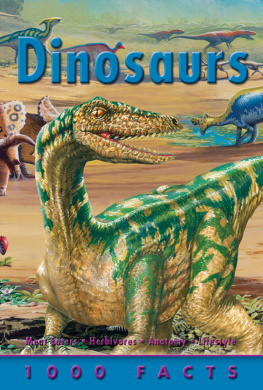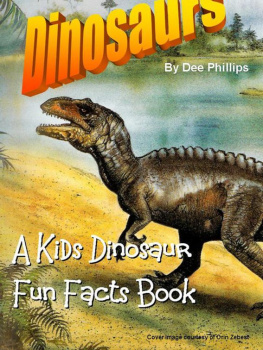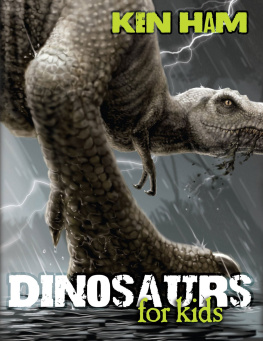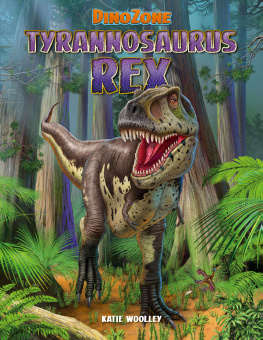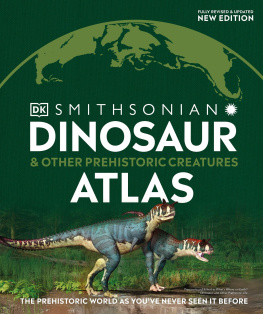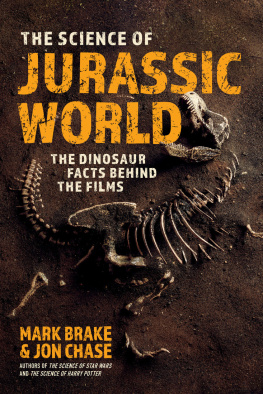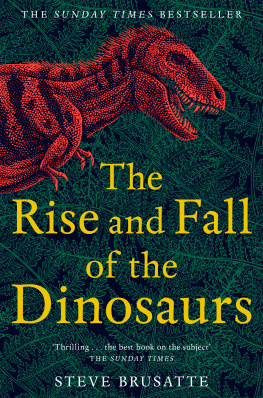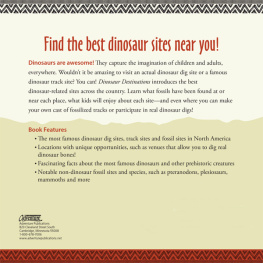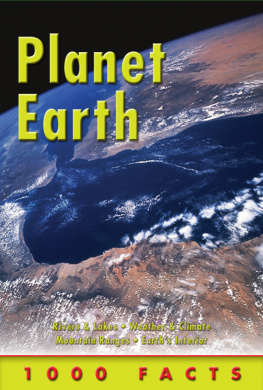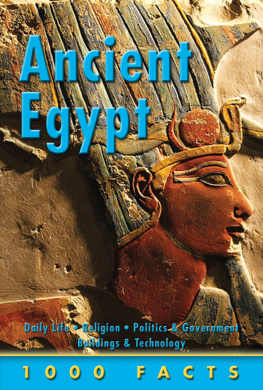
This edition published in 2008 by Miles Kelly Publishing Ltd, Hardings Barn, Bardfield End Green, Thaxted, Essex, CM6 3PX.
Copyright 2010 Miles Kelly Publishing Ltd
Editorial Director Belinda Gallagher
Art Director Jo Brewer
Volume Designer WhiteLight
Cover Designer Jo Brewer
Editorial Assistant Bethanie Bourne
Picture Researcher Liberty Newton
Reprographics Anthony Cambray, Mike Coupe, Stephan Davis, Ian Paulyn
Production Manager Elizabeth Brunwin
All rights reserved. No part of this publication may be reproduced, stored in a retrieval system or transferred by any other means, electronic, mechanical, photocopying, recording or otherwise, without the prior permission of the copyright holder.
British Library Cataloguing-in-Publication Data
A catalogue record for this book is available from the British Library
www.mileskelly.net
info@mileskelly.net


- Experts have many opinions as to which group (or groups) of reptiles were the ancestors of the dinosaurs.
- The earliest dinosaurs appeared in the Middle Triassic Period, about 230225 million years ago, so their ancestors must have been around before this.
- Very early dinosaurs walked and ran on their strong back limbs, so their ancestors were probably similar.
- The thecodonts or socket-toothed group of reptiles may have been the ancestors of the dinosaurs.
- A thecodonts teeth grew from roots fixed into pit-like sockets in the jaw bone, as in dinosaurs.
- Some thecodonts resembled sturdy lizards. Others evolved into true crocodiles (still around today).
- The ornithosuchian thecodonts became small, upright creatures with long back legs and long tails.
- The smaller thecodonts included Euparkeria , at about 60 cm long, and Lagosuchus , at about 30 cm long.
- Euparkeria and Lagosuchus were fast-moving creatures that used their sharp claws and teeth to catch insects.



- The first known dinosaurs appeared about 230225 million years ago, in the Middle Triassic Period.
- The earliest dinosaurs were small-to-medium meat-eaters with sharp teeth and claws. They ran quickly on their two longer back legs.
- Fossils of Herrerasaurus date from 228 million years ago and were found near San Juan in Argentina, South America.
- Herrerasaurus was about 3 m in total length, and probably weighed some 90 kg.
- At about the same time and in the same place as Herrerasaurus , there lived a similar-shaped dinosaur named Eoraptor , at only 1.5 m long.
- The name Eoraptor means dawn plunderer or early thief.
- Staurikosaurus was a meat-eater similar to Herrerasaurus . It is known to have lived about the same time, in present-day Brazil, South America.
- Procompsognathus was another early meat-eater. It lived in the Late Triassic Period in Germany.
- Pisanosaurus lived in Argentina in the Late Triassic Period, and was only 1 m long. It may have been a plant-eater similar to Lesothosaurus .



- The large meat-eating dinosaurs belonged to a general group known as the carnosaurs.
- All carnosaurs were similar in body shape, and resembled the fearsome Tarbosaurus .
- Tarbosaurus was very similar to Tyrannosaurus . It lived at the same time, 7065 million years ago, but in Asia rather than North America.
- Some experts believe that Tarbosaurus was an Asian version of the North American Tyrannosaurus , and both should have been called Tyrannosaurus .
- The carnosaur Albertosaurus was about 89 m long and lived 7570 million years ago, in present-day Alberta, Canada.
- Spinosaurus was a huge carnosaur from North Africa, measuring 12 m long and weighing 45 tonnes. It had tall, rodlike bones on its back, which may have been covered with skin, like a sail.
- Daspletosaurus was a 9-m long carnosaur that lived at the end of the Age of Dinosaurs in Alberta, Canada.
- Largest of all the carnosaurs was Giganotosaurus , the largest meat-eater ever to walk the Earth.
- Giganotosaurus was up to 16 m long and weighed at least 8 tonnes.



- Tyrannosaurus is not only one of the most famous of the dinosaurs, but also one about which a great deal is known. Several discoveries have revealed fossilized bones, teeth, whole skeletons and other remains.
- Tyrannosaurus lived at the very end of the Age of Dinosaurs, about 6865 million years ago.
- The full name of Tyrannosaurus is Tyrannosaurus rex , which means king of the tyrant reptiles.
- The head of Tyrannosaurus was 1.2 m long and had more than 50 dagger-like teeth, some longer than 15 cm.
- Tyrannosaurus fossils have been found at many sites in North America, including Alberta and Saskatchewan in Canada, and Colorado, Wyoming, Montana and New Mexico in the USA.
- The arms and hands of Tyrannosaurus were so small that they could not pass food to its mouth, and may have had no use at all.
- Recent fossil finds of a group of Tyrannosaurus , includes youngsters, suggesting that they may have lived as families in small herds.
- Tyrannosaurus may have been an active hunter, pounding along at speed after its fleeing prey, or it may have been a skulking scavenger that ambushed old and sickly victims.
- Until the 1990s , Tyrannosaurus was known as the biggest meat-eating animal ever to walk the Earth, but its size record has been broken by Giganotosaurus .



